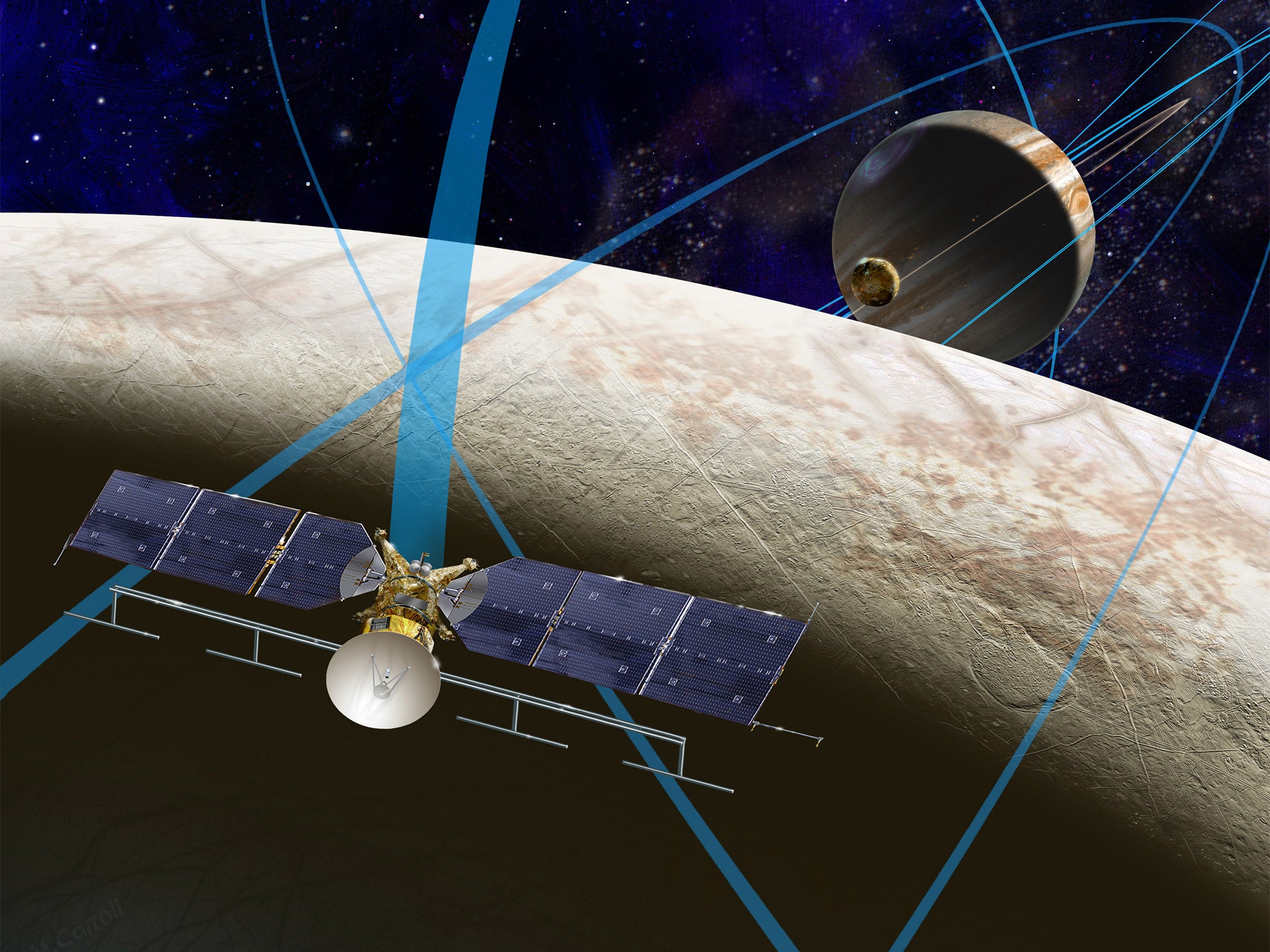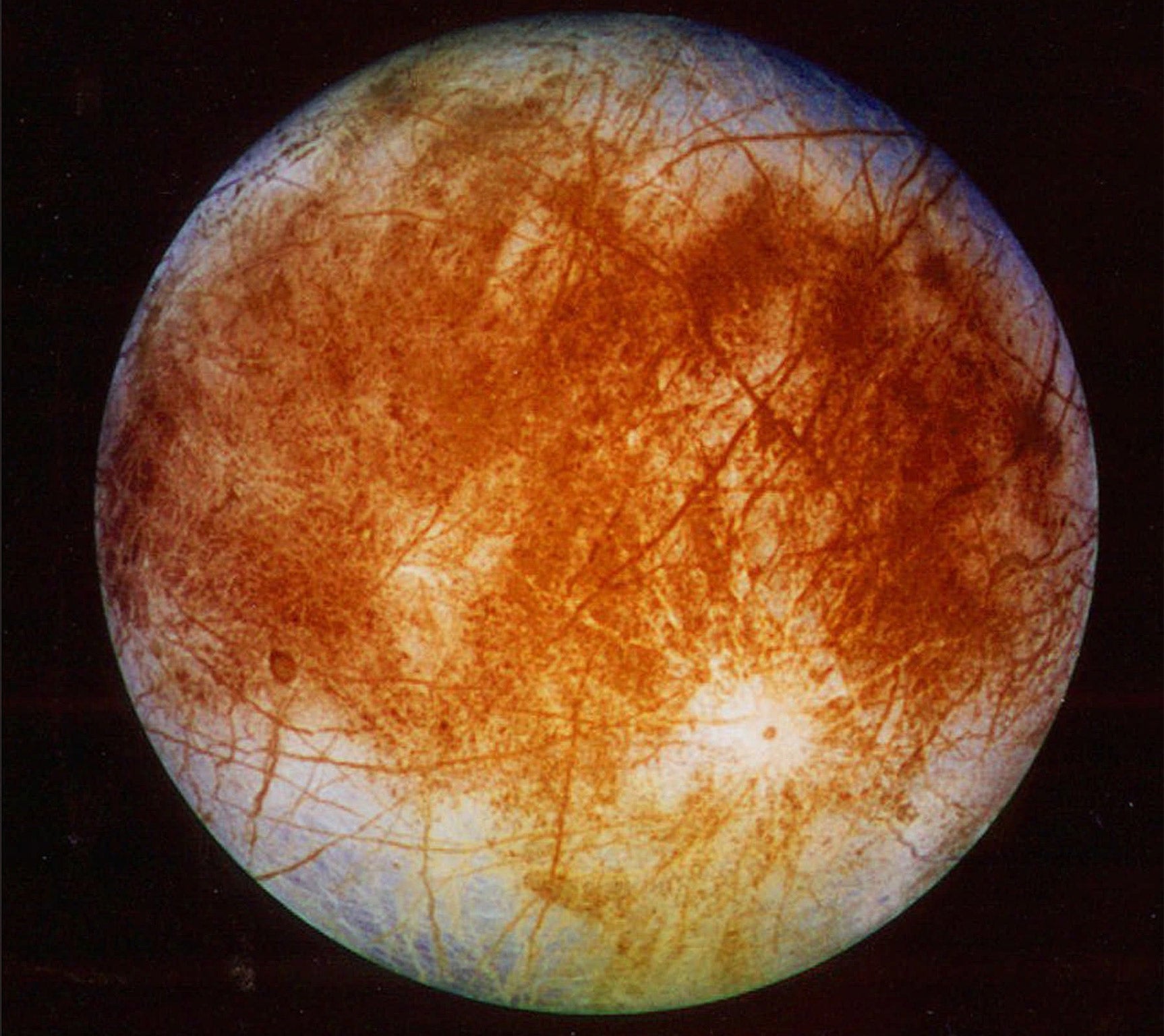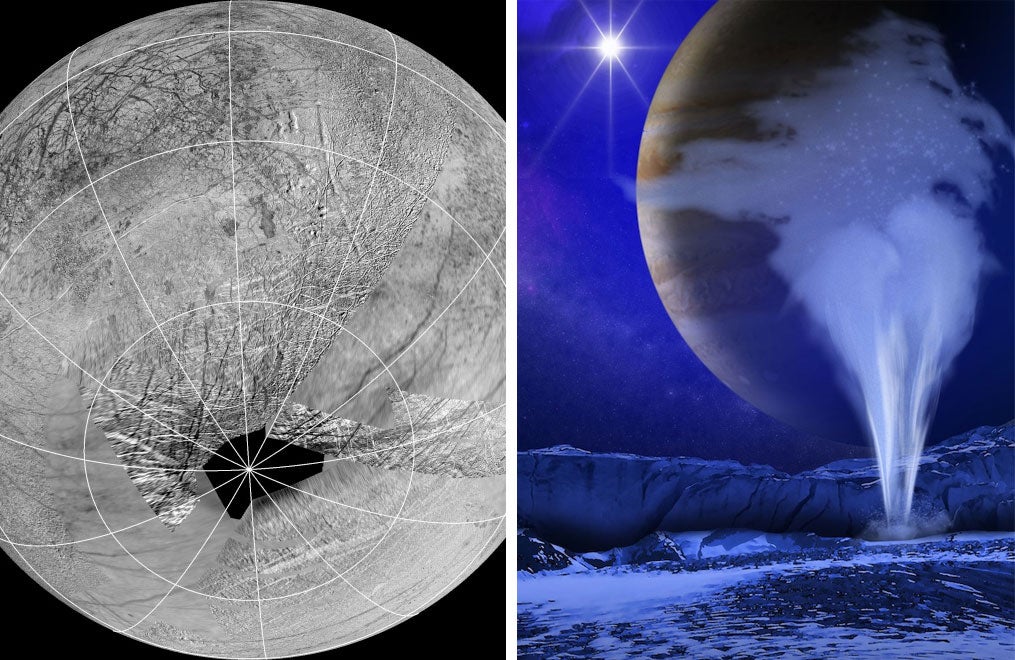Mission to Europa: Nasa announces funding to send probe to Jupiter's ice moon
The Europa Clipper could launch in the middle of the next decade

The possibility of discovering life elsewhere in the solar system has come a step closer after Nasa announced funding to send a spacecraft to examine one of Jupiter’s icy moons.
Europa, which is slightly smaller than the Earth’s moon, is covered with a thick icy crust believed by scientists to conceal a deep ocean potentially capable of a sustaining some life forms.
The American space agency has announced $30m (£20m) over the next year to move to the planning phase for building a probe to conduct multiple flybys of Europa and complete a minute study of its surface.
The project, which, it is proposed, would launch in the mid-2020s, would aim to establish proof of whether or not Europa - with its vast briny sub-surface ocean and heat possibly generated by its core - contains the ingredients for biological life.
Until now, the spacecraft - named the Europa Clipper - had only been considered a concept for the last 15 years but it has now been given the green light to move to concrete planning with total available funding of $255m (£169m) over the next five years.

Robert Pappalardo, senior research scientist at NASA’s Jet Propulsion Laboratory, told New Scientist: “This is a big deal. We’re moving forward to the next phase, where you’re a real mission. It’s just thrilling.”
The proposal involves building an instrument-loaded spacecraft roughly the size of a school bus which would be capable of withstanding Jupiter’s strong radiation belts for long enough to perform some 45 flypasts of Europa, which is the sixth largest moon in the solar system.
Previous studies of Europa suggest it may contain three times as much water as Earth and its ocean reaches a depth of 62 miles - nearly ten times the deepest point on this planet.
Scientists believe several factors, including the recent discovery that Europa may be affected by a phenomenon similar to plate tectonics and the presence of geysers on its surface, could help harbour life.

The moon also has a similar mass and therefore gravity to the Earth’s moon, which it is argued would mean that pressures within Europa’s oceans would not be too extreme for biological life to develop.
While the Clipper could answer the question of whether life is possible on Europa, it will not touch down on the surface to actually prove its existence.
Kevin Hand, a senior NASA scientist, said: “The way we framed the Europa mission science objectives is not to specifically look for life, but to understand habitability; the ingredients for life.”
Europa Clipper is one of two missions being planned for the moon. The European Space Agency is due to launch its own probe to visit three of Jupiter’s icy moons in 2022.
Join our commenting forum
Join thought-provoking conversations, follow other Independent readers and see their replies
Comments